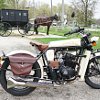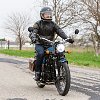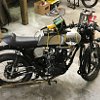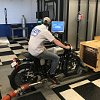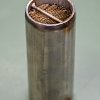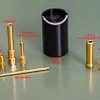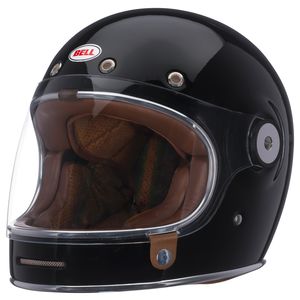Three years ago, Panhead Jim traveled to Goshen, Indiana, to check out two new motorcycles produced by the upstart Janus Motorcycles company. He came away fairly impressed with Janus’ first efforts — two retro-styled 229 cc singles dubbed the Halcyon and Phoenix.
I thought the bikes looked kind of neat, and they really appealed to some of my friends who were either very casual motorcyclists, or not yet riders at all. But at that point, it was still a hand-to-mouth operation.
They’d manage to build and sell a few bikes and use all that revenue to buy the next batch of parts. And they still had not cleared two big hurdles: EPA and California Air Resources Board (CARB) certification. I’d seen too many motorcycle startups produce a prototype and little more, and although I wished them well, I was skeptical about their chances of survival.

A few years passed and I noted the buzz when Janus brought some demo bikes to Blip Roasters, a popular coffee shop and motorcycle hangout in my home town of Kansas City. By lasting even that long, they impressed me enough to schedule a trip to Goshen, to check the company out.

If Janus makes it where Buell, Brammo, Motus, and Alta (to name just a few) have failed, it may be because they grew out of a moped shop. Given those humble roots, it never really occurred to them to compete with the likes of Honda or BMW. They set their sights low, and unlike so many startups, they’re determined to operate within their means. Their business mentors are small-town and ag-industry entrepreneurs whose values are the opposite of the get-big-fast, move-fast-and-break-things, venture-capital vogue.

They set out to find a small, air-cooled, four-stroke motor that would clear EPA regulations and work in the Halcyon, a rigid-frame roadster inspired by old board track racers, and the Phoenix, which hearkens back to the café racers of the 1960s. The board-tracker especially has a distinctively American look, and they would have loved to source an American motor, but there simply isn’t one.
They ended up meeting the guy who imported (and held the EPA paperwork) for Cleveland CycleWerx. They built some prototypes with those motors and liked the basic concept, but between chronic transmission problems and an uneasy relationship with Cleveland CycleWerx, the pair decided to look elsewhere for a powerplant. Luckily, a functionally identical motor was available from several different manufacturers.

Honda trains its rivals
One thing that’s true across the developing world is that Honda often ends up training its competitors. I was reminded of that as Richard Worsham told me the the origin story of the now-ubiquitous CG250 motor.
In the 1960s, Honda’s CB125 was an incredible motor, but Honda found that it was losing out to two-stroke competitors in fast-growing Third World markets. Honda dispatched a couple of engineers to places like Brazil and Pakistan, where they were aghast to learn that small motorcycles received no maintenance at all; they were just used until they broke, at which point the simplicity of a piston-port two-stroke was a real selling point.
Honda set out to build the CG125, a four-stroke as simple to keep running as a two-stroke. Two valves actuated by pushrods. It was never intended for Japanese, European, or American use; it was made in third-world satellite factories. Honda sold it into the developing world for decades.
The design was appropriated by several Chinese factories with little appreciation for intellectual property rights and they actually improved it, boring it out to 229 cc and adding a balance shaft. Several different companies still make versions that are generally known as CG250s, keeping the Honda-esque designation, although Honda never made such a motor.
Richard and Devin ended up finding another importer, bringing in dirt bikes with 229 cc motors that managed to clear EPA standards — and with metallurgy and manufacturing tolerances that they liked even better.

Getting certified
Even though some bikes with the new motor were already EPA-certified, that was useless to Janus.
“The EPA doesn’t certify motors,” Richard said. "They certify motorcycles.” That meant Janus had to pass emissions tests with their own carburetor and exhaust.
The EPA tests cars on its own, but it does not run a motorcycle test facility. In the United States, testing is farmed out to a handful of approved labs. One of them is run by S&S, in Wisconsin.
Richard Worsham’s a designer and an architect. He quickly realized that he was in over his head when it came to the EPA. Luckily, Janus had a technical advisor named Ken Miller, who was a retired engineer with Honeywell. Miller helped design the afterburners used in the SR71, so he was in well under his head.

Janus sourced a catalytic converter from another Wisconsin company, Catalytic Combustion, and bought a portable five-gas analyzer, strapped it to the fuel tank of a prototype, and began running it up and down local roads at the EPA’s mandated speeds.

S&S also handled the testing for the California Air Resources Board certification, which is more stringent. “Basically, you put your motorcycle in an oven and they bake it,” Devin said. “It’s all about the evaporative emissions, so we had to plumb a carbon canister into the crankcase breather, fuel tank, and airbox.”
They did well to get certified in six months, clearing the EPA hurdle in January, 2018.
A unique supply chain
At the moment they got certified, Janus had a backlog of orders and inventory, and they immediately started pumping out three or four bikes a week. The motors are Chinese; the shocks, brakes, and switchgear are imported, and the wheels come from Washington state. But the rest of the motorcycle — the frame, bodywork, saddle, axles and countless bits and bobs — is made within about 20 miles of Goshen.
Janus has its choice of suppliers for everything from precision machining and water-jet metal cutting, to laser welding and powder-coating. All those shops are operated by Amish communes. (There’s enough Amish around Goshen that Walmart has a stable where they can park their horses!)
The Amish arrived in Northern Indiana in the 19th century. They were originally farmers, but prized self-sufficiency, so they served as their own blacksmiths and carriage-builders, and eventually got really good at it. Many stopped farming altogether to focus on small-scale manufacturing.
Over the next century or so, Americans embraced the RV. Several big motor home and travel trailer builders, based in northern Indiana, began outsourcing component production those small Amish shops. Amongst the Amish, religious restrictions on the use of technology vary from district to district. The bishops in northern Indiana have allowed their communities to improve production capabilities to serve the demand of those big RV builders.

The welding shop where Janus frames are made is still forbidden from connecting to the electrical grid. But local church elders, who have a lot of latitude, have ruled that it is OK if arc welders, tube-bending machines, and lights are powered by a huge diesel generator out behind the shop.
“Most of our motorcycle is made by people who don’t use mobile phones or email,” Worsham told me. So, he often designs a component using CAD software, then prints the design and delivers it on paper.
I watched the Janus guys interact with various Amish suppliers and it’s clear the ex-moped kids genuinely like and respect the bearded Amish dudes (even though their beliefs prohibit Amish craftsmen from ever riding the motorcycles they help to make.) Worsham and Biek have come to appreciate their conservative neighbors’ intentional approach to new technology, and have come to see that our willy-nilly embrace of social media, mobile phones, and drone-delivered soylent green may not in fact be in our best interests. They’re not bothered if a new batch of frames, fuel tanks, or fenders is delivered by buggy!

Once parts are delivered to Janus’ world headquarters in downtown Goshen’s old dry cleaning shop, a handful of employees assemble, detail, and test motorcycles one at a time. There’s no assembly line; a technician puts a frame on a stand and turns a collection of major components into a motorcycle over a few hours.
They currently make three models. In addition to the Halcyon (by far the bestseller) and the Phoenix, they now offer the Gryffin (shown in the company video below), which is styled to resemble a 1960s scrambler. Janus expects to sell about 250 motorcycles in 2019. Worsham and Biek estimate that their current network of suppliers, and facility, could support a production run of about 500 per year.
Buying a Janus is a bespoke proposition. Base prices start at $6,995; most customers end up spending an additional thousand or so on options, including pinstriping, polished fuel tanks and exhausts, LED headlights, and smart leather luggage. Customers must put down a $995 deposit. Motorcycles are typically completed eight to 12 weeks later.
The Rust Belt, then and now
Goshen’s practically a suburb of South Bend, home of Democratic Presidential hopeful "Mayor Pete" Buttigeig. It’s one of those industrial heartland, "Rust Belt" towns that becomes a political stage every election season.
We’re about to hear another round of politicians claiming they’ll “bring manufacturing back,” and those speeches will be held in big plants that employ thousands of workers. But the truth is that a lot of manufacturing — and a lot of the potential growth in the manufacturing sector — is happening at smaller scale, all the way down to little enterprises like Janus.
After the bunting is taken down, and the thousand folding chairs are cleared from that sprawling factory floor, senior managers are going to look at quarterly results and move that production to Malaysia, anyway. But the guys at Janus will stay in Goshen and move heaven and earth to make their venture work.
And we’ll hear a lot of politicians railing against China. But it’s not us-versus-China any more. It’s us and China. Janus is making the most American motorcycle they can make, and slapping a tariff on their Chinese motor will hurt Janus’ employees in Goshen, and their quirky network of Amish suppliers.

Available at your local dealer? No
A lot of customers drop by the shop when ordering or picking up a new Janus. There’s a map in the shop, with a pin identifying every buyer, and there’s a concentration of buyers in the upper Midwest/Great Lakes region.
Janus also hosts monthly "demo days" for people who want to visit the shop, test ride the bikes, then go for lunch with the founders at a local brew-pub. At the moment, a lot of sales have that kind of face-to-face character.
But many other buyers commit essentially sight-unseen. When I was there, a professional bike-moving operation came by and picked up three new motorcycles for delivery to people scattered across the United States.
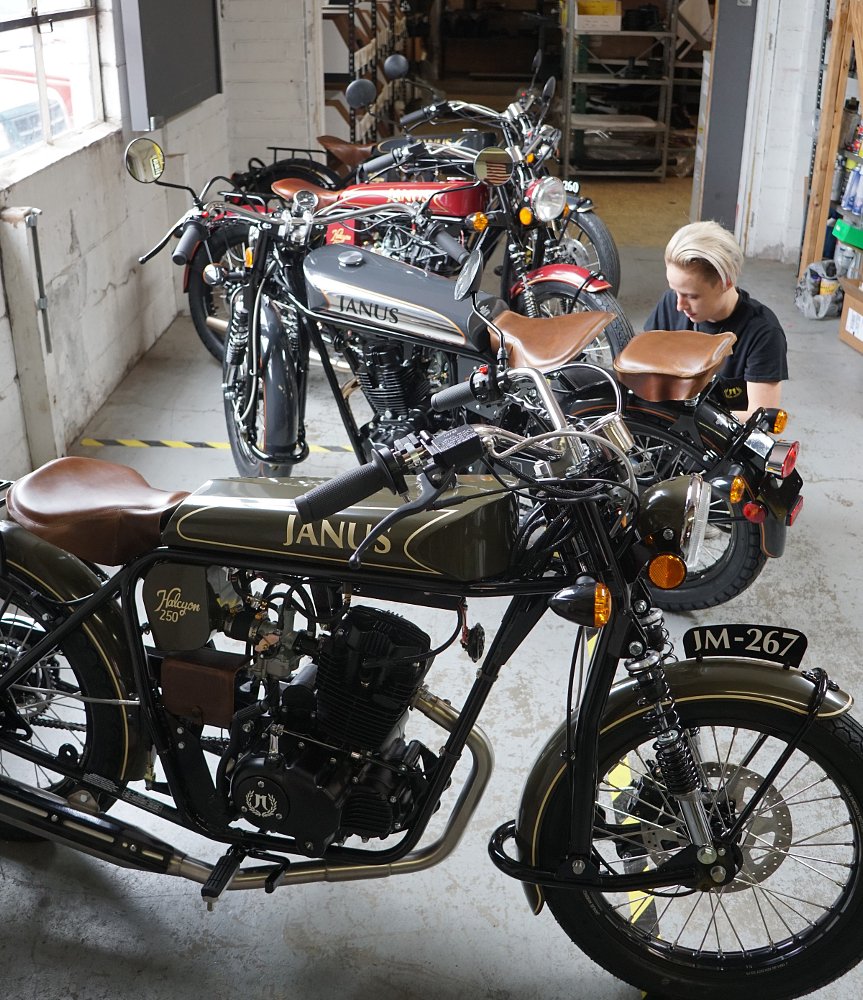
Although you might worry about buying a motorcycle without dealer support, Janus maintains a complete spare parts inventory, and offers a unique two-year warranty program. Customers can have warranty service performed at Janus’ expense, at any independent motorcycle shop.
The nearest thing to a Janus that’s made by a major motorcycle manufacturer is Suzuki’s TU250X, which sells for less than $5,000. But Janus doesn’t feel that it’s competing with Suzuki, or any extant motorcycle company. When asked what companies inspire them, Worsham and Biek suggest the U.K.’s Morgan Motor Company, which makes sports cars that have hardly changed since the 1930s.
“For $7,000 you can have a luxury hand-made motorcycle, if you’re only willing to change your perception of performance,” Worsham says. “They go 70 miles an hour. How much faster do you want to go on a daily basis?”
Consider the Amish craftsmen who weld the frames and hand-form the aluminum fuel tanks. They drive one-horsepower vehicles... powered by an actual horse. Around Goshen, 70 mph is more than fast enough.





